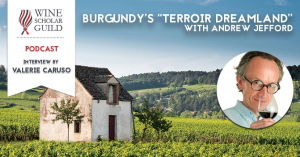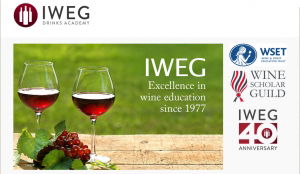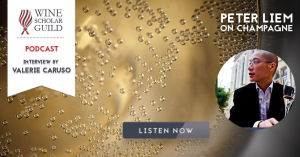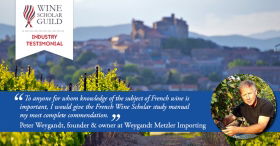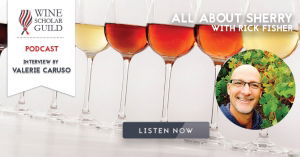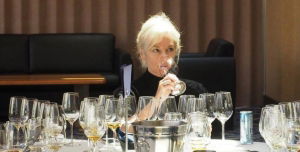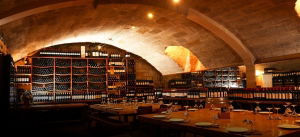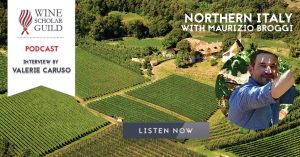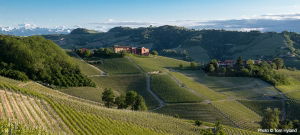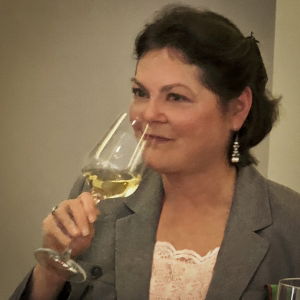BLOG
Blog
Julien Camus Wine Culture
Decanter’s Andrew Jefford talks with us about Burgundy’s “Terroir Dreamland” or the Côte d’Or.
Brooke Herron Latest News
Meet Paul Miles, educator at IWEG in Toronto, Canada. School: IWEG Educator: Paul MilesLocation: Toronto Paul Miles has worked in both the alcoholic and non-alcoholic beverage industry for over twenty years, specializing in brand strategy, channel and trade marketing, strategic account and...
Julien Camus Wine Culture
Peter Liem talks with us about the progressive movement in Champagne. As we’ll discover in this conversation, there’s more to the terroir story than the chalk soils and the weather.
Julien Camus Latest News
We would like to thank Peter Weygandt, one of the most highly respected importer of French wine in the USA, for taking the time to carefully review the French Wine Scholar® study manual and write us such beautiful words of testimonial. PETER'S FULL TESTIMONIAL ABOUT THE FRENCH WINE SCHOLAR® MANUAL...
Julien Camus Wine Culture
In this episode, we are chatting with Rick Fisher, Spanish Wine Scholar Education Director, about Sherry styles and getting a behind-the-scenes peek at the forthcoming Spanish Wine Scholar Program.
Brooke Herron Latest News
Sharon McLean is a Certified sommelier, DipWSET and Approved French Wine Scholar Program Provider at her firm Cru Consultancy, which she owns and operates with her partner, Treve Ring.She is also the Lead Instructor for the Wine Scholar Guild’s Live Online French Wine Scholar course series, an MW...
Sarah Graham-Beck Tasting & Trends
… including excellent restaurants out in the wine regions. Preparing your next Bordeaux wine tour? Sarah Graham-Beck, Tour Manager on the Wine Scholar Guild’s Bordeaux wine tours will be writing a series of articles about travel tips to Bordeaux. In this first article, Sarah shares a selection of...
Brooke Herron Latest News
An Interview With WSG's Newest French Wine Scholar Program Provider We were recently lucky enough to add a fantastic Belgian school to our global French Wine Scholar Program Provider network. Sybille Troubleyn of Winewise in Antwerp tells us in this interview about how she got into wine, why she...
Tom Hyland Regional Spotlight
In the previous post, we considered lesser known red grape varieties and wines from Piemonte. For this article, we will examine similar wines and grapes from Trentino, Friuli Venezia Giulia and Sicily.
Julien Camus Wine Culture
Maurizio Broggi, DWS, FWS, is the Education Director for the Italian Wine Scholar (IWS) program. During an eight-day summer tour, he led a group of IWS educators through three of Italy’s northern wine producing regions, Trentino, Franciacorta and Lugana.
Julien Camus Latest News
Meet Julien Boulard aka "Zhulian", one of China's most well-known French wine professionals with over 40,000 followers on Weibo. We are truly thrilled to welcome Julien, a Frenchmen of passion and talent, to bring the French Wine Scholar study & certification program to Nanning and Guangzhou. The...
Tom Hyland Regional Spotlight
Any wine student or lover of Italian wines can name the country’s most famous red wines, such as Barolo, Brunello di Montalcino or Amarone della Valpolicella. But given the variety of Italian wines and grape types, it stands to reason that there are many more examples produced throughout the...
Julien Camus Latest News
Meet Alessandra Esteves MAES, DipWSET, FWS from Florida Wine Academy, a new Wine Scholar Guild approved program provider in Miami, Florida. Her first French Wine Scholar session started August 7th with another one scheduled to begin November 28th 2018. Learn more HERE. Give us a bit of background...
Julien Camus Latest News
Meet Eno Cultura, a new French Wine Scholar approved program provider in Brazil. Their first FWS session is scheduled to begin October 18th in Sao Paulo. Learn more HERE. Sharing their accumulated knowledge from over 25 years combined experience in the European wine industry, Paulo Brammer and...
Rick Fisher Wine Education & Careers
In the search for a mapmaker for the Spanish Wine Scholar® program, I was somehow led to Quentin Sadler. I didn’t think it possible to find someone with the same love and passion for Spain as I have, but I sure did in Quentin! It was obvious that our collaboration on this program was meant to be....
Tom Hyland Tasting & Trends
Thanks to a string of successful vintages, there has been a great deal of recent publicity regarding Barolo and Barbaresco wines. Produced entirely from Nebbiolo, these two iconic wines have changed in style over the past 20-30 years; where once, the wines were reserved upon release, today, the...
Rose-Anne St. Jean Wine Culture
Deep dive into Trentino, Franciacorta & Lugana Who could have imagined there would be so much to know about these three wine regions! Maurizio Broggi, along with the Consorzia of Trentino, Franciacorta and Lugana took us, a group of Italian Wine Scholar® educators, into a deep dive to discover...
Julien Camus Latest News
The 1st Wine Scholar Guild educator trip to Italy makes the Italian news on RAI, Italian national TV. Go Maurizio! Go Team!
Latest News
Cru Artisan College is an annual, multi-city, full-day wine education seminar series bringing together a panel of talented winemakers who will address some of the nation’s leading sommeliers, trade members, wine educators and serious students of wine. The fifth edition of CAC, scheduled for July...
Julien Camus Wine Culture
Wine Scholar Guild Education Director, Lisa M. Airey, CWE, FWS was knighted by the French government in a ceremony at the Embassy of France in Washington DC on March 28, 2018. She was inducted as “chevalier” to the Ordre du Mérite Agricole for her contributions to French agriculture (namely,...

